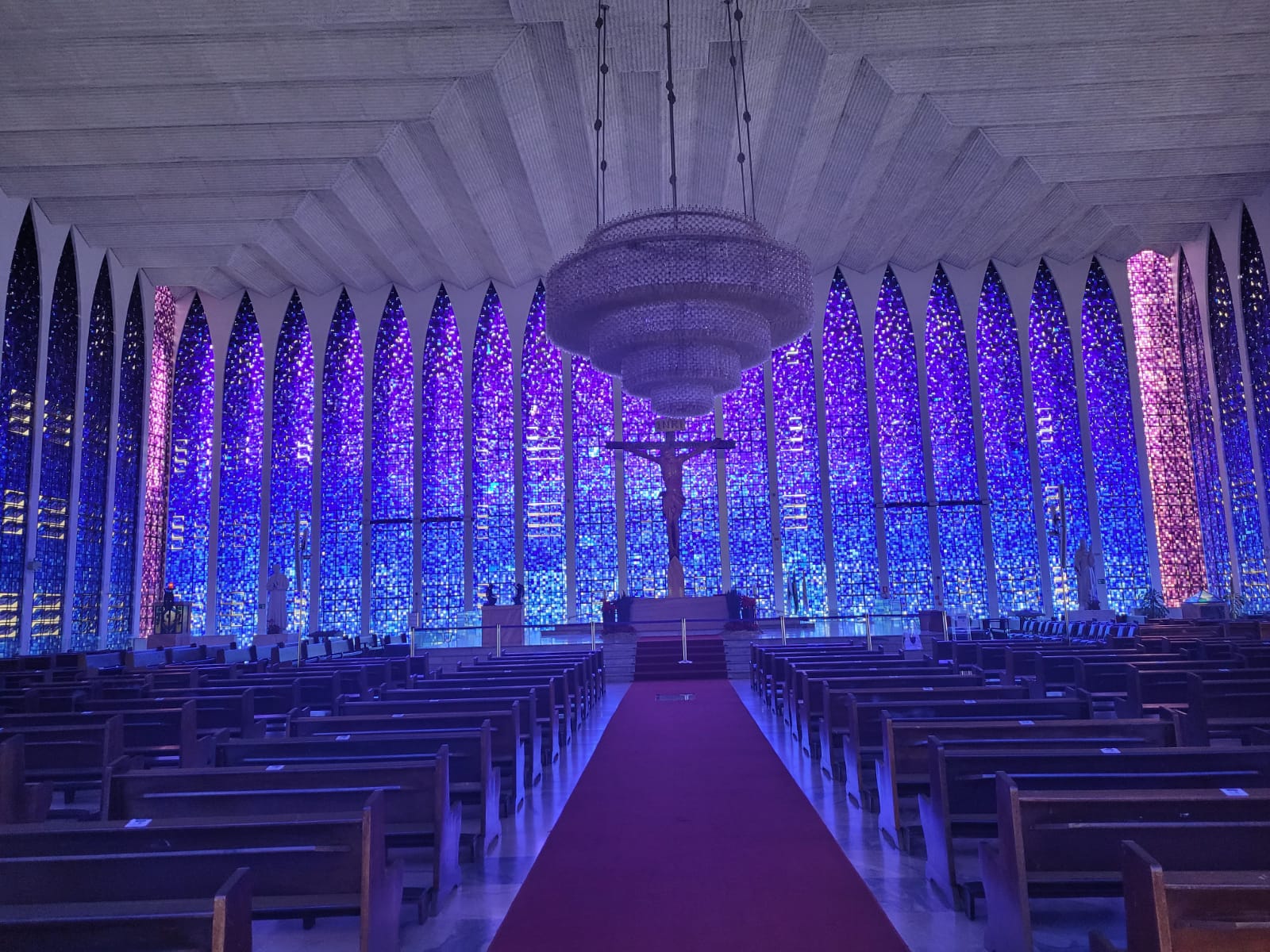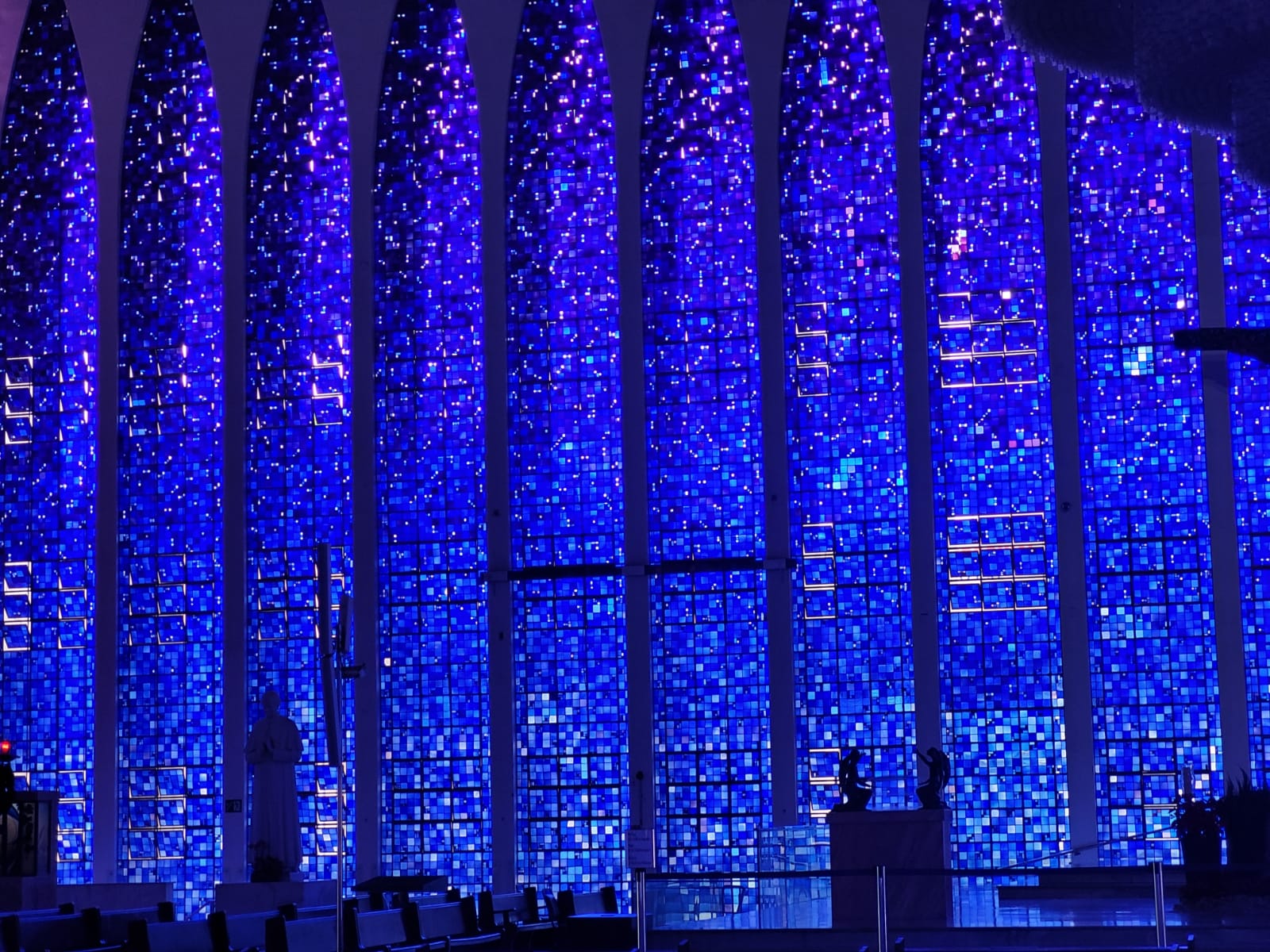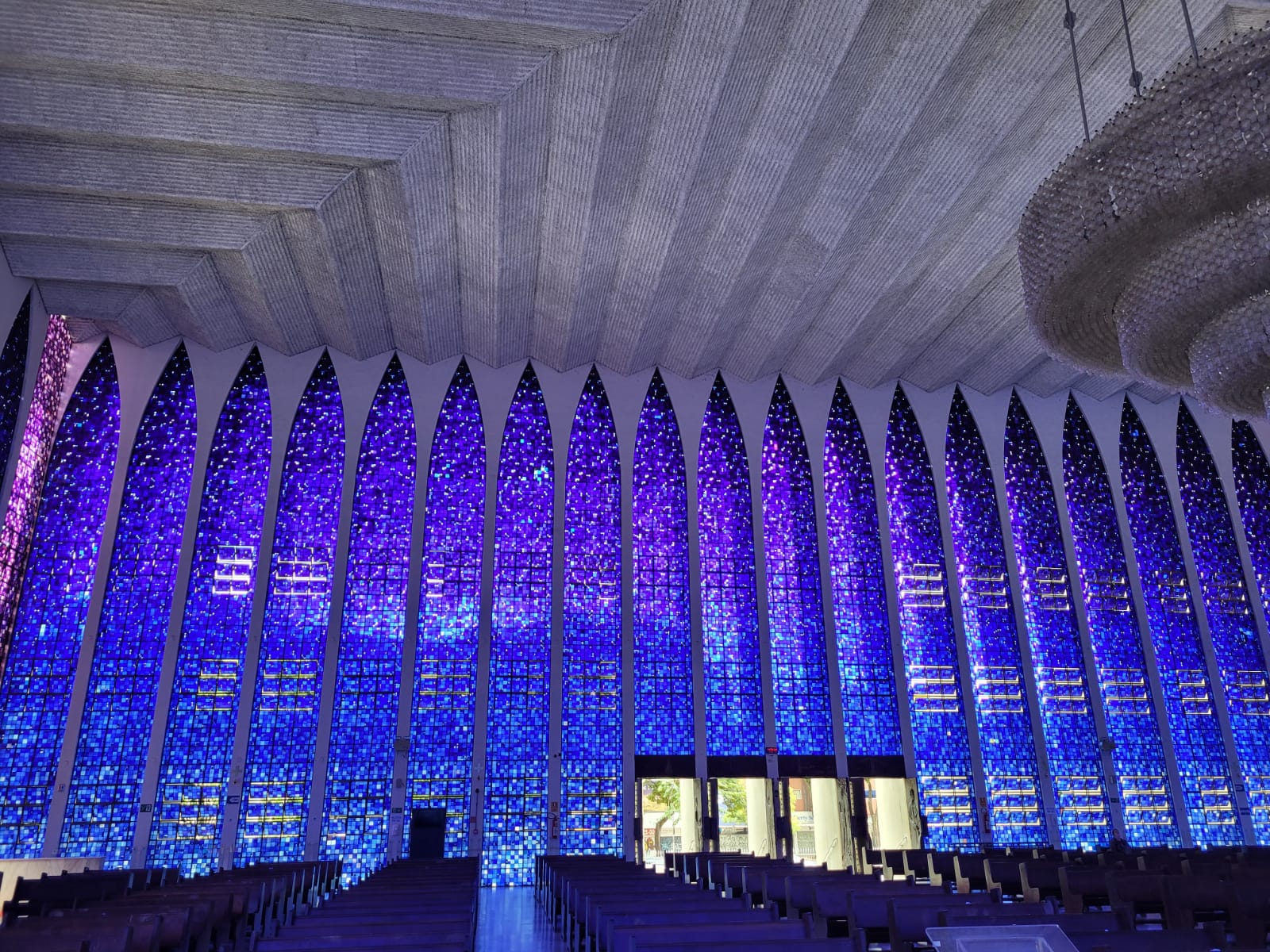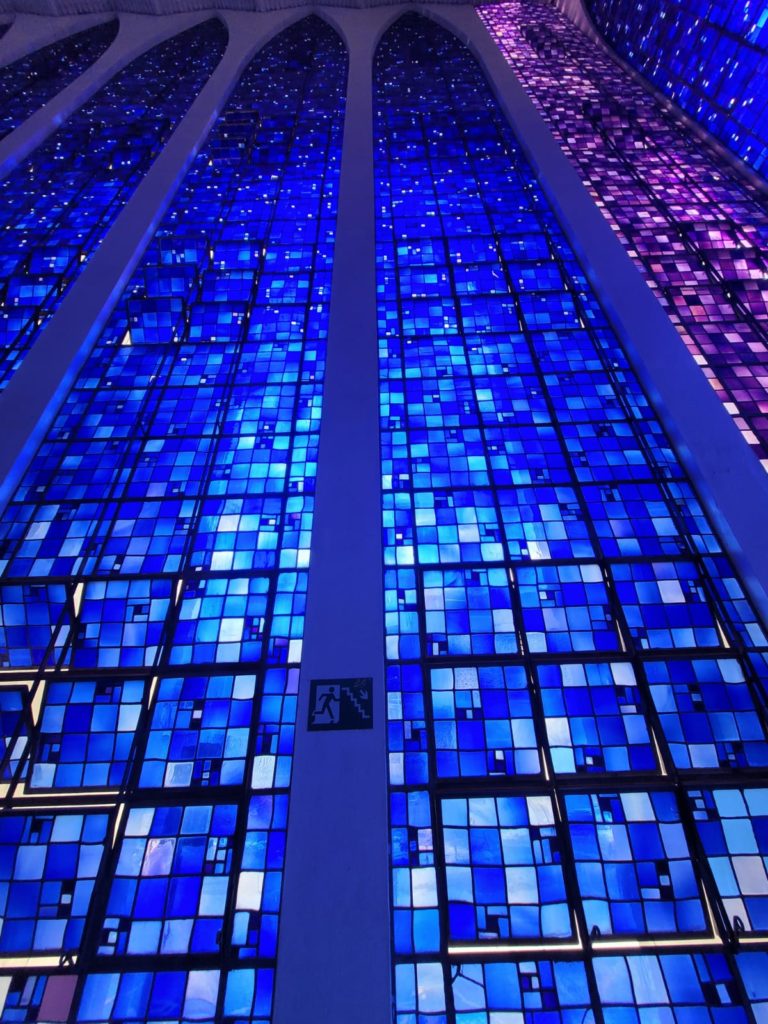RIO DE JANEIRO, BRAZIL – It is said that every country is an evolving spiritual entity grappling with its destiny. Brazil’s capital is particularly spiritual in searching for its soul and personality to symbolize its role in the country’s greater destiny and to influence the national consciousness.
If one could see the light of the spiritual soul of Brasilia, it would be a majestic blue as we imagine the heavens to be. If you could enter the spiritual heart of the symbolic and well-thought-out city, it would be a grand structure that hides at its center, just under the surface, beating with meaning and destiny and working as an essential tool of the divine forces.
It is the blessing and good fortune of all who live and pass through Brasilia that such a place exists, that it is real, and that it is welcoming, and that it has the power to reach into your own soul and thread the cityscape and your moment there as a long line of events destined to be— This transcendental place meant as the spiritual heart and soul of the city is the Sanctuary of Don Bosco -Santuário São João Bosco- a massive monument to destiny and to the spiritual flags the universe placed there long ago.

Bathed in the blue light that comes through its 80 floor-to-ceiling panels of stained glass, the building that sits along Earth’s 15th parallel throws its image onto those who enter its white marble floors, surrounding body, and spirit in an embrace that began in 1883 when the Italian priest and educator Don Bosco foresaw Brasilia in a dream of prophecy.
Don Bosco related his dream, in which he envisioned an extraordinary New World capital. This utopian civilization would flourish “at the point, where a lake was formed,” between the 15th and 20th parallels to lead a promised land of inconceivable wealth, a great nation. These things will happen in the third generation,” wrote Don Bosco. Brasilia, situated between the 15th and 16th parallels and built in 1956 by the third generation after Don Bosco’s death, is widely accepted among Brazilians to be that place.
“The mysterious forces that rule the world have acted in such a way as to … create the opportunity to convert the old dream into reality,” wrote Joscelino Kubitschek, the Brazilian president who inspired and spearheaded the construction of Brasilia; the capital is often referred as “the city Don Bosco dreamed of.”

Built between 1963 and 1970, the sanctuary is a Gothic-style square cathedral of 80 columns wrapping all four sides and reaching 16 meters high, topped by Gothic arches that evoke sentinels of heaven. Pink stained glass at the four corners gives a preternatural frame to the 12 shades of blue to purplish-blue stained glass that fills the columns in some 140,000 squares designed by Sao Paulo architect Cláudio Naves and manufactured by the Belgian artist Hubert Van Doorne. The blue background, dotted with tinier white squares, looks like a starry sky as you enter and invokes heaven itself, creating a celestial meditative space where many visitors aim to clear the clutter of their lives, get lost in its immensity, and find themselves.
Under this glass-box-and-concrete structure lies Don Bosco’s Royal Urn, containing the saint’s right arm and visible through a glass frame on the marble floor as you approach the altar along the center aisle. It is designed for the faithful to see the saint and be seen by him, as do the pilgrims in Don Bosco’s native Italy, where they are said to seek in him an encounter with “a father, a teacher, a friend.” Don Bosco’s right arm is significant because that is the arm used to bless, reconcile, and lead millions of children around the world out of ignorance and poverty through education, says the Catholic church; it is work for which he is recognized the world over and for which he was canonized as a saint.
Bronze reliefs by artist Gianfranco Cerri at the doors and the crucified Christ by Santa Catarina State sculptor Gotfredo Thaler complete the geometrical sanctuary. At night, it is illuminated by a single chandelier made of 7400 Murano glass pieces from Venice, giving it what some claim is an otherworldly dimension.

The sanctuary is the largest spiritual monument in honor of Don Bosco in the capital district. Along with others around Brasilia, it forms the thread that binds the capital city, holds it and gives it its spiritual soul. For Brasilia, the sanctuary is its light and heart, a monument to its destiny, and a guide to the mission of Brazil itself.
IF YOU GO: Santuário São João Bosco is located near the Monumental Axis, walking distance from the Patio Brasilia Mall. It is open daily from 7 am to 9 pm. Free admission.


